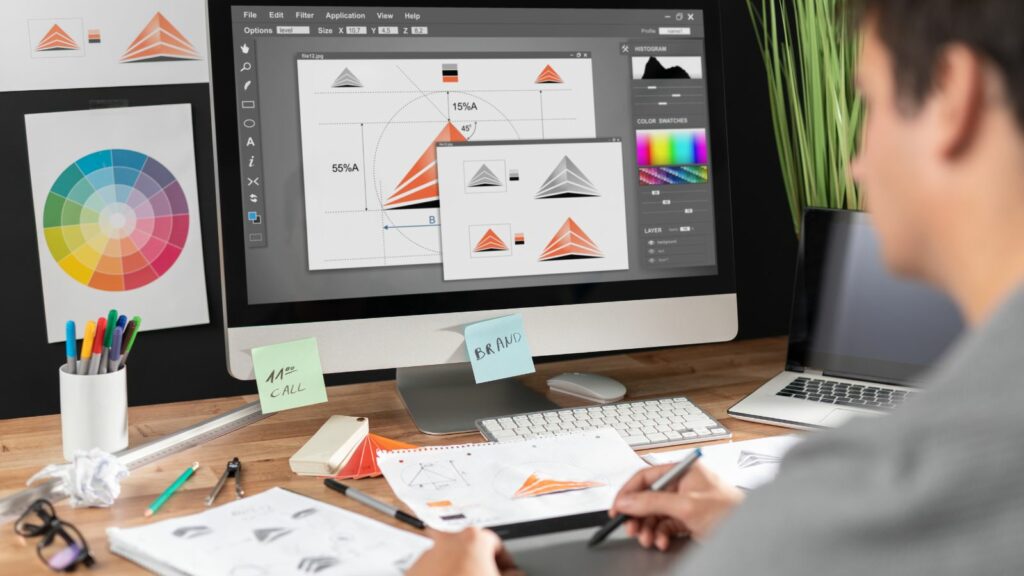In the ever-evolving world of branding, logo design trends play a crucial role in shaping a company’s identity and connecting with its audience. As businesses strive to stand out in a crowded marketplace, staying updated with the latest design trends can make all the difference. From minimalist aesthetics to bold, vibrant colors, the trends in logo design reflect broader cultural shifts and technological advancements.
Designers are constantly pushing the boundaries, blending tradition with innovation to create logos that are not only visually appealing but also memorable. Whether it’s the resurgence of retro styles or the embrace of futuristic elements, today’s logo trends offer a fascinating glimpse into the future of branding. Dive into the latest trends to see how they can inspire and elevate your brand’s visual identity.
Logo Design Trends
Logo design trends play a crucial role in defining a brand’s identity. These trends reflect both cultural shifts and technological advancements, providing insights into consumer preferences. Keeping up with trends ensures that a brand remains relevant and appealing to its audience.
- Minimalism
- Minimalist designs feature clean lines and simple shapes, often using limited color palettes. Brands like Apple and Nike use minimalism to maintain a sleek, timeless look.
- Bold Colors
- Vibrant hues grab attention and evoke strong emotions. Companies like Coca-Cola and Spotify leverage bold colors to create memorable and impactful logos.
- Geometric Shapes
- Geometric designs incorporate basic shapes to create modern and engaging logos. This trend offers versatility, seen in brands like Google and Adidas.
- Hand-Drawn Elements
- Logos with hand-drawn elements bring a personalized touch to a brand. This approach resonates with audiences seeking authenticity, as seen in the logos of Ben & Jerry’s and Innocent Drinks.
- Vintage Styles
- Retro designs evoke nostalgia and connect with audiences on an emotional level. These logos often feature classic typography and muted colors, as demonstrated by brands like Levi’s and Coca-Cola.
Popular Logo Design Trends in 2023
In 2023, logo design trends emphasize creativity and innovation. Companies embrace various styles to differentiate themselves in a saturated market.
Minimalism dominates logo design, focusing on simplicity and clarity. Clean lines and limited color palettes reduce visual clutter, creating a timeless and versatile look. Brands like Apple and Nike exemplify this trend with their straightforward yet powerful logos. Flat design, a subset of minimalism, uses flat colors and 2D elements to enhance readability and appeal across digital platforms.
Vintage Aesthetics
Vintage aesthetics bring a nostalgic touch to modern branding. Using retro elements, such as classic fonts or aged textures, creates a connection to the past while maintaining current relevance. Brands like Levi’s and Coca-Cola successfully adopt this trend to evoke memories and build emotional bonds with consumers. This trend often incorporates monochromatic or muted color schemes alongside hand-drawn illustrations to enhance authenticity.
How Technology Influences Logo Design
Technology significantly impacts logo design by enabling innovative techniques and tools that transform the creative process and final output.
AI and automation streamline the design process, making it more efficient. AI tools like Logojoy and Looka can generate multiple logo variations quickly, using algorithms that adapt to specific brand elements. These tools analyze design trends and user preferences to create logos that align with modern aesthetics. Designers can leverage AI-driven enhancements to refine their concepts, ensuring high precision and reduced manual effort. Automation also facilitates rapid prototyping, allowing designers to experiment with various configurations without extensive rework.
Virtual Reality Integration
Virtual reality (VR) adds a new dimension to logo design, offering immersive experiences. Brands can use VR to visualize how logos will appear in different environments, enhancing spatial awareness and contextual relevance. VR tools like Adobe Aero allow designers to create 3D logos that users can interact with in a virtual space. This integration helps brands stand out by providing interactive and engaging ways to showcase their identity. VR also supports collaborative design efforts by enabling real-time feedback and adjustments in a shared virtual workspace.




